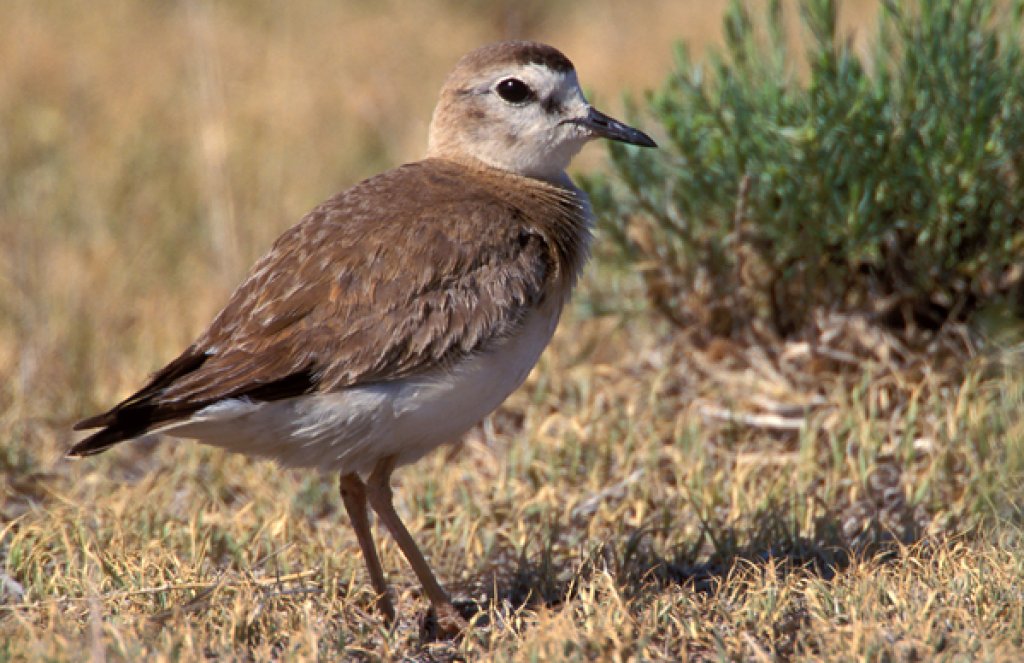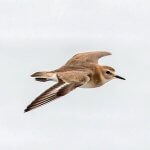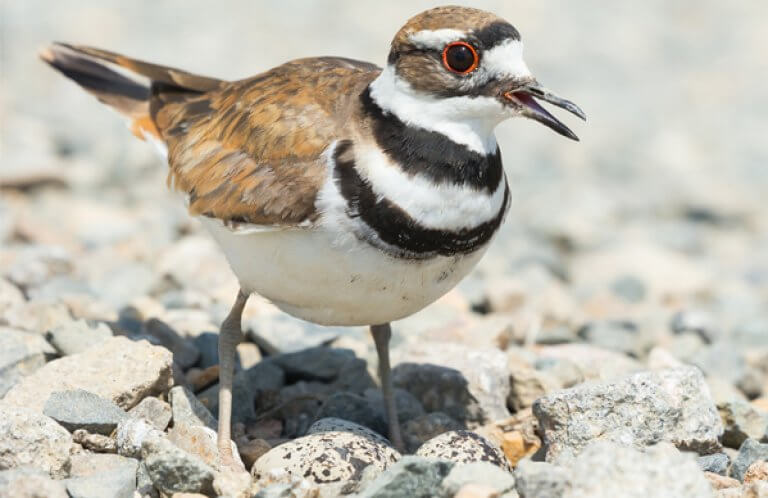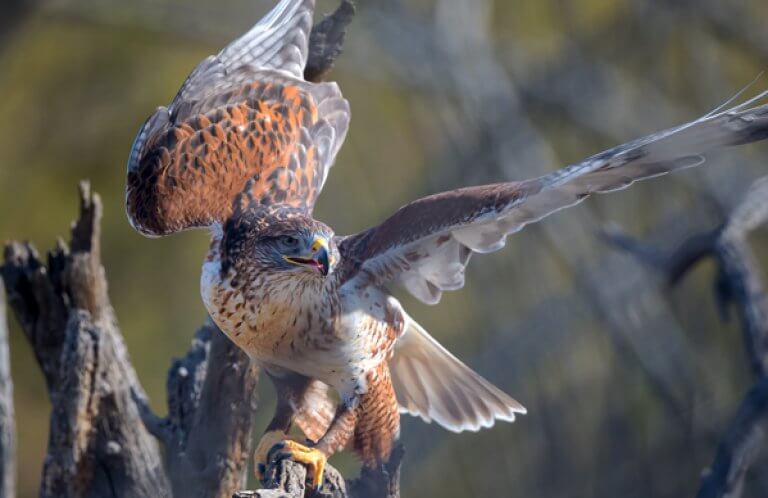About the Mountain Plover
Despite its name, the sand-colored Mountain Plover is a species of open plains. It's roughly the size of a Killdeer, but is much more of a habitat specialist than its more familiar relative. And unlike the Snowy Plover, this "shorebird" lives far from water. One of the Mountain Plover's more accurate nicknames is “Prairie Ghost,” inspired by this bird's habit of freezing in place when threatened, becoming nearly invisible among its dry, grassy surroundings.
The Mountain Plover's preference for open plains puts it into close association with several of the most distinctive mammals of North America.
Plains Partners
The Mountain Plover historically lived side by side with native mammals whose habits helped maintain its preferred shortgrass habitat. These included the American Bison (buffalo), Pronghorn, and Black-tailed Prairie Dog. Mountain Plovers followed grazing buffalo and Pronghorn herds to feed on insects stirred up by the large mammals' movements. They often nested on the bare soil among prairie dog colonies, which provided camouflage and allowed the birds to easily detect approaching predators or potential prey.
These days, Mountain Plovers associate with herds of domestic cattle and nest on fallow agricultural fields. In some areas where native grazers and prairie dog colonies remain, they may nest in their traditional setting. (See Conservation, below.)
Songs and Sounds
The Mountain Plover gives a number of low-pitched whistles and calls. Listen here:
Breeding and Feeding
Nesting in Stereo
Mountain Plovers nest only in areas with sparse vegetation or bare ground, such as at prairie dog towns. Their nests are simple scrapes in the ground, and though their eggs are well-camouflaged, they are vulnerable to predators such as coyotes, foxes, and ground squirrels. More than half of egg clutches are lost to predation or accidental trampling.
Mountain Plovers have evolved an interesting way to hedge their bets in the risky nesting business. After the female lays her first clutch of eggs, the male starts incubating that nest, while the female goes on to lay another clutch in a second nest. This nesting strategy allows for a greater yield of chicks than a situation in which both the male and female tend a single clutch together. Females can mate with several males and have several male-tended nests in one breeding season.
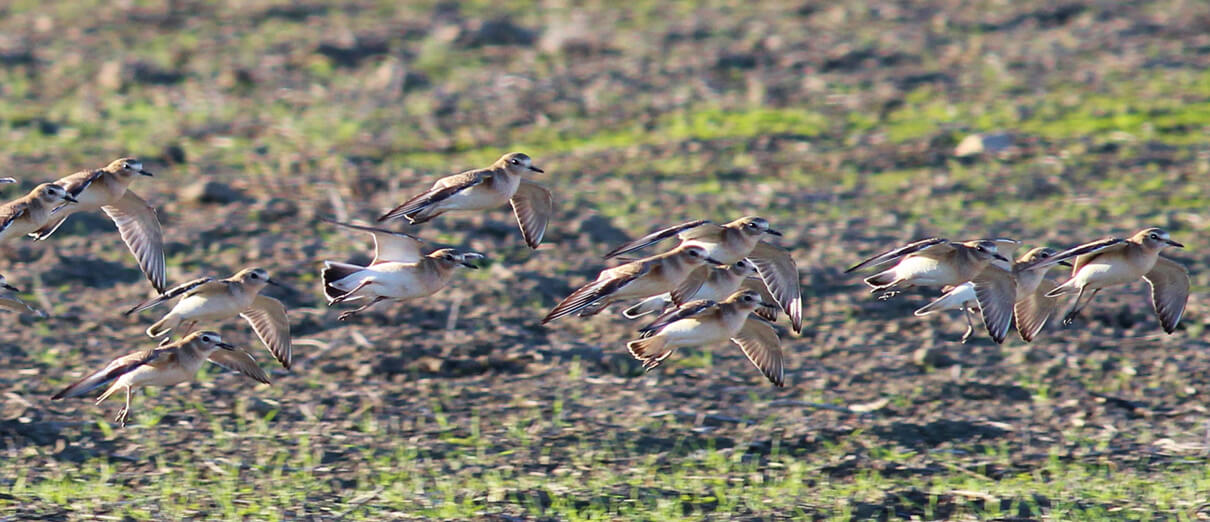
Once the chicks hatch, they can almost immediately run and feed themselves. Adults will lead chicks away from the nest scrape to seek shaded, sheltered spots under taller vegetation or even in the shadow of a nearby water tank.
Like close relatives such as the Piping Plover, the Mountain Plover feeds on the ground, foraging through short grasses and dirt fields for insects, particularly grasshoppers. Other insect prey includes crickets, beetles, and flies. A gregarious species, the Mountain Plover can often be found in loose flocks of up to several hundred birds, especially in winter.
Region and Range

The Mountain Plover breeds in the high plains of North America, stretching from extreme southeastern Alberta and southwestern Saskatchewan south to northern New Mexico and the edge of the Texas Panhandle, as well as in the Davis Mountains of West Texas.
Most winter in central to southern California, with smaller numbers in Arizona and Texas. Wintering Mountain Plovers also occur in northern and central Mexico.
Conservation
The North American Breeding Bird Survey shows declines of over 80 percent in Mountain Plover populations over the past few decades. This steep drop is mainly due to habitat loss, caused by the disappearance of native herbivores and large-scale agricultural practices that transform native shortgrass habitats. Other birds of these grasslands, such as the Burrowing Owl and Ferruginous Hawk, show similar declines.
Mountain Plovers that attempt to nest in fallow agricultural fields often lose nests and eggs to farm equipment, and pesticides have been shown to have negative effects on eggs. Energy development may further degrade Mountain Plover nesting habitat.

Help support ABC's conservation mission!
In 2010, the U.S. Fish and Wildlife Service proposed the Mountain Plover for protection under the Endangered Species Act, although that listing was not approved.
In Mexico, ABC is working with partner Pronatura Noreste to implement sustainable land stewardship practices in the El Tokio and Valles Centrales BirdScapes, where Mountain Plovers winter. These Mexican BirdScapes also provide essential wintering habitat for the Long-billed Curlew and Sprague's Pipit, as well as sheltering the Worthen's Sparrow, an endemic resident bird listed under the Alliance for Zero Extinction.
Get Involved
Policies enacted by the U.S. Congress and federal agencies, such as the U.S. Fish and Wildlife Service, have a huge impact on migratory birds. You can help shape these rules for the better by telling lawmakers to prioritize birds, bird habitat, and bird-friendly measures. To get started, visit ABC's Action Center.
Living a bird-friendly life can have an immediate impact on migratory birds in the United States. Doing so can be as easy as adding native plants to your garden, avoiding pesticides, and keeping cats indoors. To learn more, visit our Bird-Friendly Life page.
American Bird Conservancy and our Migratory Bird Joint Venture partners have improved conservation management on more than 6.4 million acres of U.S. bird habitat — an area larger than the state of Maryland — over the last ten years. That's not all: With the help of international partners, we've established a network of more than 100 areas of priority bird habitat across the Americas, helping to ensure that birds' needs are met during all stages of their lifecycles. These are monumental undertakings, requiring the support of many, and you can help by making a gift today.





































